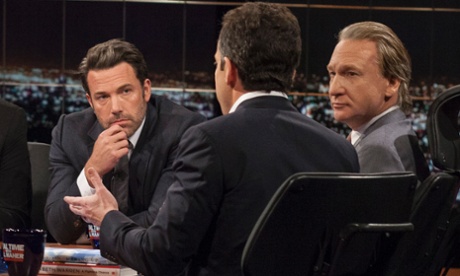It looks like Syria’s status as a troubling news topic is here to stay; contradicting reports have just emerged accusing both pro and anti government factions of utilising child soldiers. Syrian rebels have been accused of breaching international law by recruiting combatants under the age of 18, while the recruitment of any individual under the age of 15 constitutes a full-fledged war crime.
Hostile conflicts can victimise children in different ways. According to the United Nations, there are 6 particularly grave violations condemnable by international law: the recruitment or use of children as soldiers, the perpetration of sexual violence against children, the attack of a school or hospital, the denial of humanitarian access, the indiscriminate murder and maiming of children, and the abduction of children.
In 2011, both pro and anti-government armed forces in Syria, along with their affiliated militias, were placed on the UN Secretary-General’s “List of Shame”. This list keeps a disturbing track of any and all parties who routinely include children in armed conflicts. The Office of the High Commissioner for Human Rights has since then estimated some 7,000 children to have been killed in the Syrian Civil War. Meanwhile, concerned activist groups such as NGOs and the UN have regularly sent in commissions to detail the deteriorating state of human rights in the region.
The most recent reports have come from New York based Human Rights Watch. The organisation also released a controversial series of interviews with 25 former child soldiers of the anti-government militias. Many web-based news sources were quick to re-report the news, only to find themselves overwhelmed by a growing negative public backlash. The report was commonly seen as biased given its failure to investigate any pro-government militias. According to Human Rights Watch, such an investigation was impeded by logistical and security concerns.
However, the NGO’s report did refer to a 2012 UN commission document wherein both sides of the conflict were charged with multiple, grave violations of child rights. The graphically detailed charges listed by this UN report were frequently referred to by Human Rights Watch to substantiate their own case against anti-government militias.
“One of the best ways opposition military commanders can protect children is to make a strong, public commitment against the use of children in their forces, and to verify boys’ ages before allowing them to enlist.”
“All eyes are on the Syrian opposition to prove they’re trying to protect children from bullets and bombs, rather than placing them in danger,” said Priyanka Motaparthy, a researcher at Human Rights Watch. “One of the best ways opposition military commanders can protect children is to make a strong, public commitment against the use of children in their forces, and to verify boys’ ages before allowing them to enlist.”
So far, there has been no conclusive evidence of government forces formally endorsing the enlistment or conscription of underage children. However, pro-government forces have become noticeably lax in the implementation of these minimum recruitment standards, allowing a worrying number of underage youth to slip into military ranks. These same forces have also both endorsed and used a number of other practices banned by international law. Last year, three incidents were documented in which Syrian government forces used children as hostages or as human shields.
Furthermore, the common knowledge that anti-government rebels use, and will likely continue to use, children as combatants has seemingly granted pro-government forces the permission to treat rebel child combatants as they would any other rebel soldier. As a result, children are vulnerable to random arrests and prolonged periods of detention. Testimonies from past child detainees, gathered by the UN, report their being beaten, whipped with electrical cables, burned with cigarettes and subjected to electrical shocks to the genitals. UN officials have also uncovered the practice of detaining minors and adults in the same cells, a situation which has lead to sexual assaults occurring inside the incarceration centres themselves. During military ground operations or house searches in villages suspected of harbouring rebels, children are routinely killed by both gunfire and indiscriminate bombing. On May 25, a staggering forty-one children were killed in Al-Houla ⎯ a minority from the prolonged shelling… the majority from close range gunshots.
Rewards are given to children who complete their written homework and manage to accurately hit mock targets with their assigned weapon. Once children show enough interest in the war effort, they are assigned to a militia.
Unlike those testimonies gathered by the UN, the child soldiers interviewed by Human Rights Watch reported no sexual assault, threats to loved ones, mutilation, or any other grave maltreatment during their recruitment. It seems instead that Syrian anti-government factions are recruiting children through the guise of education. Syrian “rebel curriculums” combine combat training with math, reading, writing, and history. Rewards are given to children who complete their written homework and manage to accurately hit mock targets with their assigned weapon. Once children show enough interest in the war effort, they are assigned to a militia.
Of the 25 child soldiers interviewed, many claimed to have joined these factions to follow in the footsteps of a friend or family member. Others joined the rebel groups due to circumstance, already finding themselves living in battle zones or having previously suffered at the hands of government forces. Some joined in order to find a renewed sense of community, many rebel militias having formed from village populations. Each militia seemed to have different age standards or degrees of involvement for child soldiers. Some rebel commanders told children to go home; some only allowed children to hold support functions; some pressured children to become suicide bombers.
Child soldiers are often stigmatised in peaceful communities, facing great difficulties as they attempt to break from their past experiences. In Syria, this problem is further compounded by the decrease in community strength and interactions that could assist children in reintegration into society. Rebel village communities’ conflicting perceptions of child soldiers, their legality and deserved treatment, the existing shortage of resources across the country and the wide dispersal of refugees have all strained community bonds to a breaking point. As the Syrian Civil War rages on, eyes increasingly sweep from one side of the conflict to the other in the maintenance of international law and basic human rights standards.



